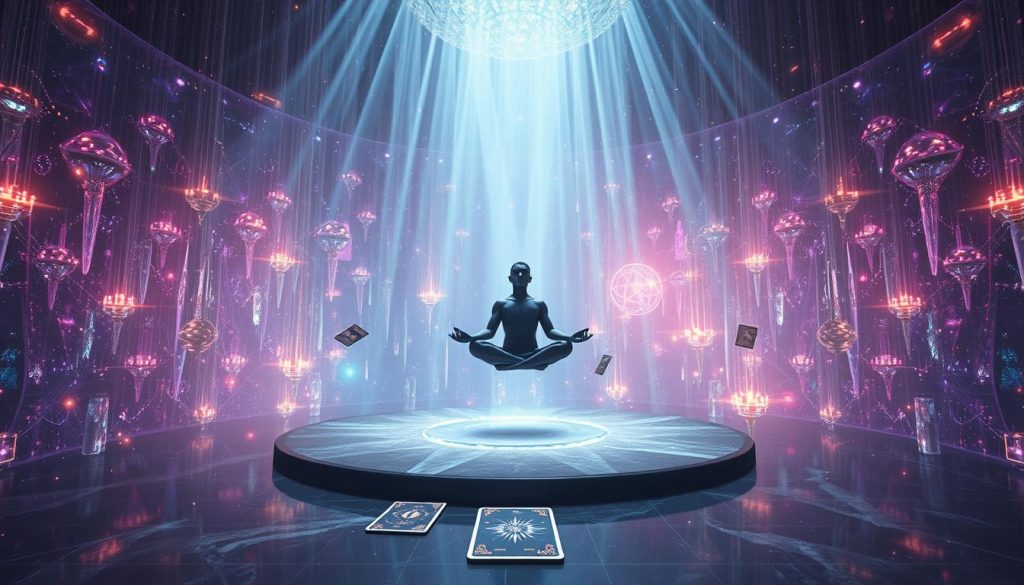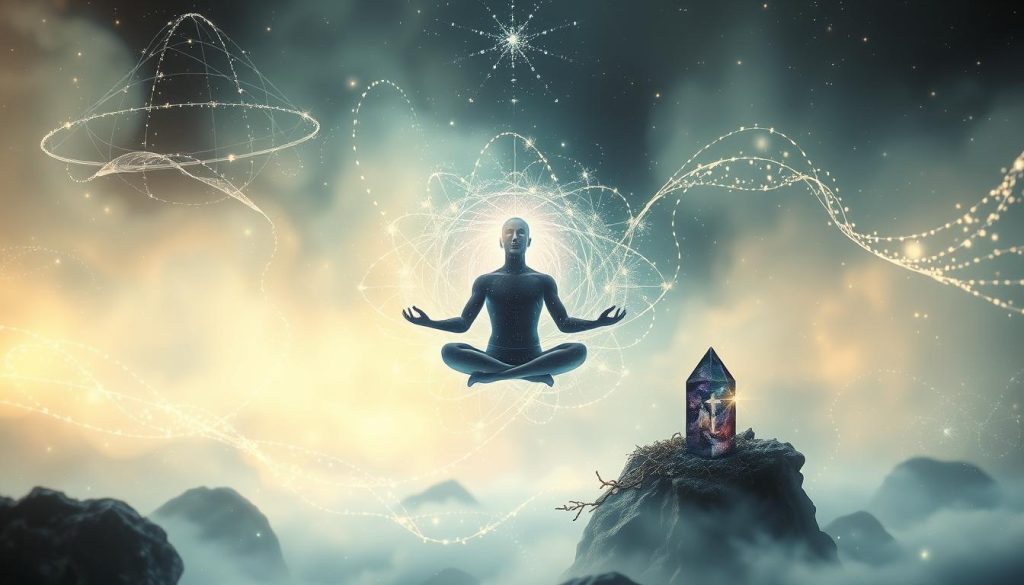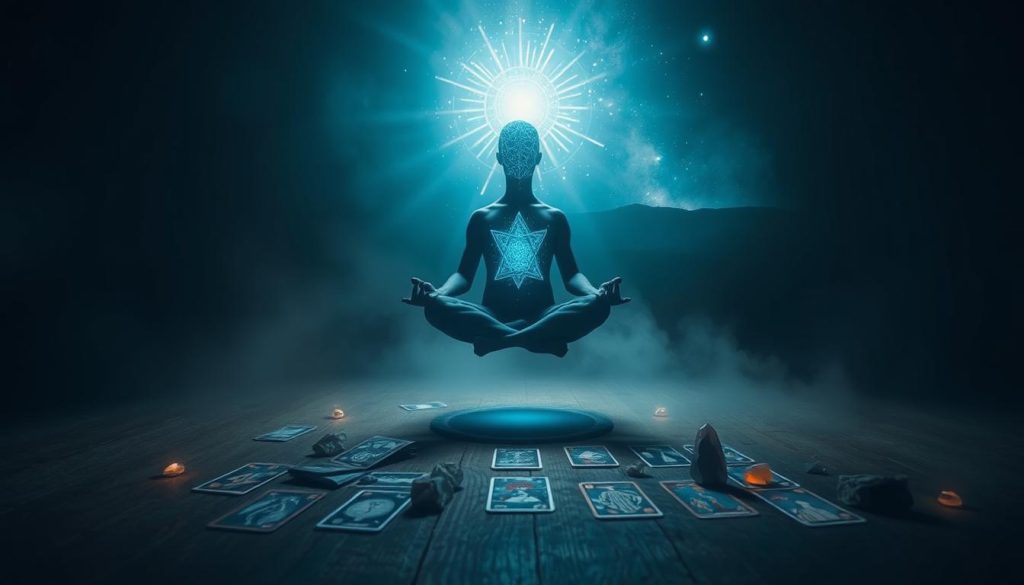We step into 2025 with a clear promise: to explore where quantum ideas meet timeless wisdom in ways that feel useful and true. This is a gentle map, not a manifesto.
Think of information and observation as living conversations that shape everyday reality. We draw on voices like John Wheeler, David Bohm, Fritjof Capra and even Thomas Kuhn to sketch the path from past debates to fresh bridges.
We are modern seekers who value evidence and meaning. We ask about consciousness and existence with curiosity, not claims. Our goal is understanding, not dogma.
Why this matters: these ideas now touch design, culture, and daily tools people use to relate to the world and one another. We keep the tone humble, playful, and practical as we travel onward.
Why this merger matters now: an editorial stance from the edge of discovery
We watch a shift where careful inquiry meets public curiosity. Public events and respected researchers are moving conversations about consciousness and reality from the margins into shared rooms.
On February 13, 2025, the Italian Cultural Institute @INNOVIT in San Francisco hosts a panel titled “Consciousness, Quantum Physics and Spirituality.”
The lineup is notable: Federico Faggin, Irfan Siddiqi, and Massimiliano Tomba. These voices bring inventor stories, lab leadership, and the history of mind to the same table. The event is by invitation and open to IIC members by email registration.
We take an editorial stance: curiosity first, certainty last. We honor facts and rigorous study while asking why people care—meaning, healing, and connection.
Modern science is widening its lens. New tools, experiments, and interdisciplinary forums let physicist and historian test ideas together. We welcome both scientists and seekers, and we keep watch for hype.
Our promise: to build a shared language for testing claims, comparing notes, and growing understanding over time.

From “it from bit” to Brahman: theoretical bridges that reframe reality
We map a gentle bridge between John Wheeler’s famous phrase and Vedanta’s idea of a single ground. Wheeler proposed that bits of information underlie what we call physical things.
Fritjof Capra and Bernard d’Espagnat noticed similar echoes. A few books and university press titles helped make those parallels discussable beyond niche journals.
What shifts? Modern quantum mechanics loosened classical mechanics’ certainty. That change lets some theory treat observation and information as participants in reality.
This invites a careful question about human consciousness. If patterns of information persist, might mind be an emergent interface with a deeper informational field rather than only neural chemistry?
We pair philosophers with physicists and test ideas gently. Limits matter: analogies guide, but they must earn clarity through experiment and clear thought.

Simple aim: build bridges that help us live better, not just think harder.
Quantum Metaphysics: How Science and Spirit Are Merging in 2025
Here we ground speculation in practice: real studies, careful methods, and honest uncertainty.
Notable data nudges the discussion. John Polkinghorne suggested divine action might select among small quantum possibilities. The U.S. Army’s declassified Gateway report once speculated about linking individual and wider consciousness.
Dean Radin framed psi claims using quantum ideas. Sam Parnia’s AWARE study reported verified perceptions during cardiac arrest. These are not proofs. They are prompts for better tests.
We focus on reproducible methods. Contemplative practice, attention training, and precise measurement form a shared toolbox. That lets us study interactions between intention, subtle physical cues, and measurable outcomes.

At the human level we ask practical questions. Can rituals become attention technologies? Can prayer be studied as connectivity practice? We invite scientists and practitioners to co-design experiments that clarify claims.
The simple fact: if this path holds, it will yield stronger predictions, improved well-being, and richer understanding of human consciousness and reality—while keeping modern science’s standards front and center.
Culture, ethics, and governance in a quantum-connected world
When observation shapes outcomes, culture must learn to steward that power. We start from David Bohm’s call: fragmentation fuels conflict, so repair becomes civic work. That insight asks us to design spaces and rules that promote care over coercion.

Design as moral prompt: imagine sacred architecture tuned for consciousness-matter sensitivity. Public buildings, parks, and platforms can nudge attention toward empathy without forcing belief. Designers, a physicist, and a philosopher should sit at the table when plans scale.
Governance shifts too. We picture systems that treat citizens as members of one information field: transparent, feedback-rich, and responsive at every level. That kind of policy helps trust compound over time.
Religion and spirituality evolve when institutions adopt information-aware ethics. That means less gatekeeping, more stewardship of attention and shared meaning. Schools teach perception, media literacy, and contemplative practice as core skills.
Rights and responsibilities matter. Privacy for inner practice, access for healing, and safety standards for new tools must be codified. We keep science close so hype fades and useful claims survive the test of replication.
In short: ethics in a connected world asks us to scale choices that favor love over fear and systems that reward collective wisdom.
Evidence, skepticism, and humility: re-reading mind, life, and time
We treat intriguing findings as invitations, not verdicts. The AWARE study reported cases of verifiable awareness during cardiac arrest. Those reports invite replication, not headline certainty.
We note careful meta-analyses too. Dean Radin summarized small but consistent psi effects that need tighter protocols. Thomas Nagel (Oxford University Press) argued that materialist models struggle to account for consciousness.
Physics matters. d’Espagnat pointed to observer-system entanglement. Heisenberg reflected on deep philosophical limits of mechanics. Any model of human consciousness must respect those boundary conditions.
Our practice: pre-registration, blind protocols, and cross-lab replication. We ask philosophers to clarify mind, existence, and causation so debate stays clear and useful.

Reality resists neat summaries. If quantum information or other theory touches experience, it should produce reliable effects we can map over time.
In short: celebrate intriguing signals without overselling them. Use university press–level rigor, open methods, and collective review. Choose humility as a method—more dialogue, fewer proclamations.
Toward a shared horizon: a 2025 call to integrate knowledge, practice, and purpose
Let’s invite a shared experiment where knowledge, practice, and purpose meet at everyday tables.
We propose a cooperative project across domains—where university press summaries, open libraries, and community labs sit beside daily attention training. This work aims to grow understanding while improving life.
We ask physicist-practitioner partnerships to turn abstract information models into humane interactions. Simple practices should scale; outcomes must be measurable and rooted in reality over time.
Nature teaches at every level. If integration helps, the world gains health, connection, and more meaningful life. We honor differences between domains while choosing clarity and compassion as shared goals.
One question to carry forward: what small move today brings a more beautiful, coherent tomorrow—and who will try it with us?
